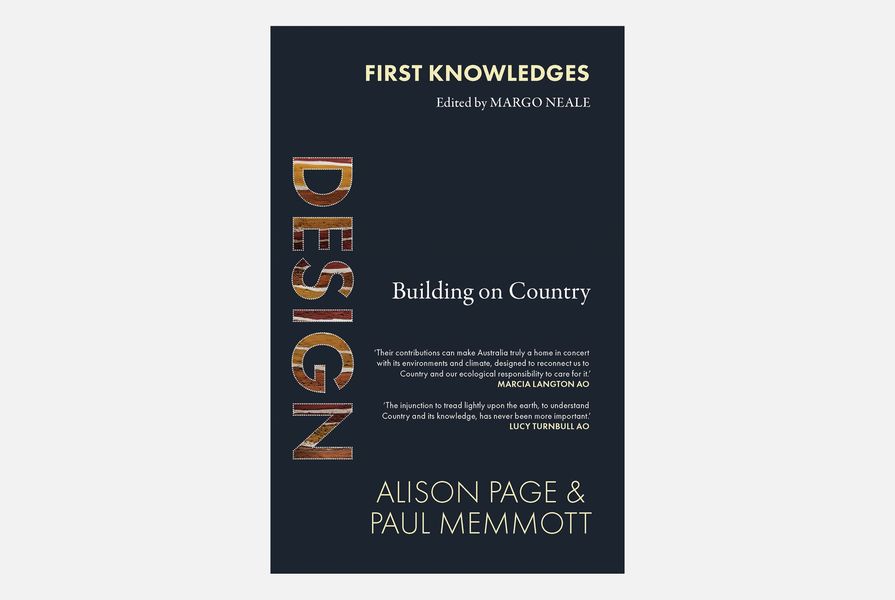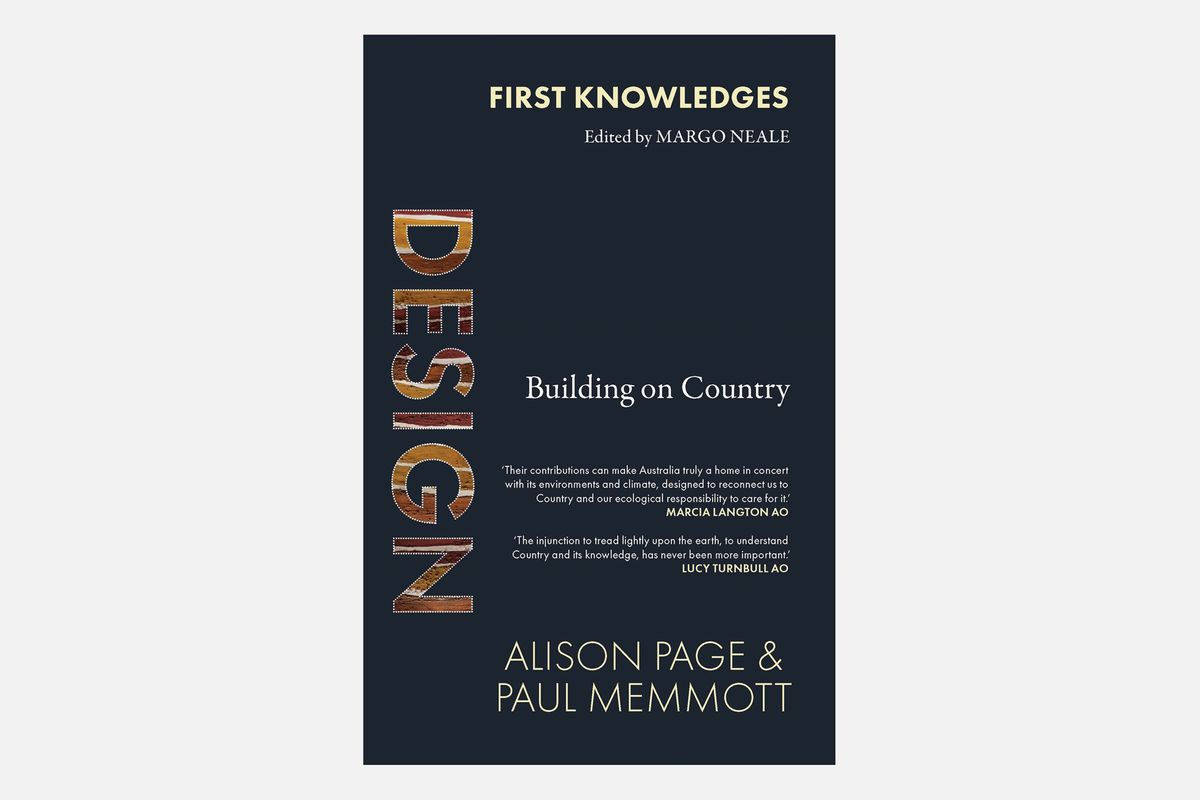Alison Page and Paul Memmott have written a timely and powerful book, Design: Building on Country as part of the First Knowledges series edited by Margo Kneale. The book is the second in the six-book series, where Indigenous and non-indigenous authors come together in an act of reconciliation to explore a range of First Nations knowledges. The book draws on Indigenous knowledge to illuminate how design as a practice can become an expression of respect for and observance for Country, and how design can begin to “pick the scabs and allow country to breathe again,” as Page explains it. It is a call to the design professions to accept and step into the obligations inherent in the now customary acknowledgment of Country and to develop responsibility for this knowledge relationship. In doing so, the authors invite us into the practice of what they have named “New Australian Design.”
Page and Memmott have outlined the implications of doing so by linking a series of Indigenous-led-and-designed projects with knowledge of Country and measuring the outcomes achieved as a result in terms of social, experiential and cultural impacts. In so doing, the book places an emphasis on design practices which privilege knowing through doing and being as a means towards the organization of urban space. Through these practices, space then moves towards place as an enabler of social, environmental and cultural conditions through connections.
Through the first half of the book, the authors outline an astonishing range of traditional Aboriginal knowledges gathered through their lived practices: Page as a Walbanga and Wadi Wadi woman working with the Merrima Design group and with a lifelong practice of aligning traditional knowledge and practice with contemporary design; and Memmott across a lifetime’s work as an architect, anthropologist and academic. Memmott and Page, both separately and together, take us through key aspects of traditional Aboriginal architecture. We learn that materials and objects are not inanimate but spiritually loaded, that the relationships between physical and social environments are intertwined, and that traditional Aboriginal architecture was designed in what we now call a sustainable way – in a sympathetic and responsive relationship to its environment.
The second half of the book is devoted to exploring how these knowledges can and do inform contemporary design practice. In doing so, the authors draw heavily on the key concepts of “place” and “Country,” linking these back to traditional knowledges and to the way these concepts can contribute to more positive environmental outcomes in projects.By acknowledging the intrinsic link between the concepts of place and Country to traditional knowledge, the design framework of New Australian Design necessarily foregrounds the positive environmental impacts of design outcomes derived through the framework. The authors note that design generated this way has a lighter environmental footprint, requires fewer natural resources in construction and is often biophilic.
Page asks the question of how we might translate the spatial practices of traditional cultural landscapes within contemporary Australian urban design. She draws on the geographer Tim Cresswell in describing place as “providing the conditions of possibility for creative social practice … [place] becomes an event rather than a secure ontological place … marked by openness and change rather than boundedness and permanence.” This concept of place rather than space then becomes a way of illuminating how an understanding of traditional knowledge can offer a pathway for reconceptualizing contemporary urban conditions. This is exemplified by a 2019 project in Redfern by Indigenous design firm Yerrabingin. In this project, a native bush tucker farm has been created on an inner-city rooftop that invites visitors to learn about traditional knowledge systems and sustainable food production. Importantly, the design incorporates opportunities for cultural practice in place through attention to place – seasonality, maintenance, sensorial experience – through talks, workshops and educational tours but also through the day-to-day “doing” of the farm.
Place is then situated in relation to Country and operationalized through it as a practice-oriented endeavour. Page quotes researcher Daniéle Hromek’s wonderful definition of Country which is both poetic and pragmatic: “Country soars high into the atmosphere, deep into the planet crust and far into the oceans … incorporating the tangible and intangible…caring for Country is not only caring for land, it is caring for ourselves.” Quoting the work of her colleague architect Dillon Kombumerri, Page invites us to see the “gaps in memory” which are manifestations of the devastating impacts of colonization as presenting opportunities for the rebuilding of knowledge through the integration of Country into all new infrastructure projects. This has now been mandated in New South Wales, through Dillon’s work at the office of the Government Architect NSW. The work of Merrima Design on Wilcannia Hospital is put forward as a powerful exemplar of the possibilities inherent and realisable in this approach. It is a project which draws on the intangible cultural values of the Barkandji people of Wilcannia to achieve a form which is mnemonically expressive, inclusive, experientially rich and utterly functional. In doing so, it exemplifies the multiplicity of benefits of a practice in which design with Country is embedded.
The book upends old, often paternalistic paradigms of deficit-driven design practice that address Indigenous knowledges and communities through a problematized lens. It instead makes an offer or invitation to the design professions to engage with and through Country and the relationships inherent in that, providing simultaneously an outline of the many rich benefits to all Australians of such an approach. This approach, this New Australian Design, will, as the authors assert, “improve the wellbeing of people and create places that ultimately mean more to all of us … because we are all connected to [and through] Country.”
Design: Building on Country. Alison Page and Paul Memmott, Thames and Hudson (Australia), 2021.












